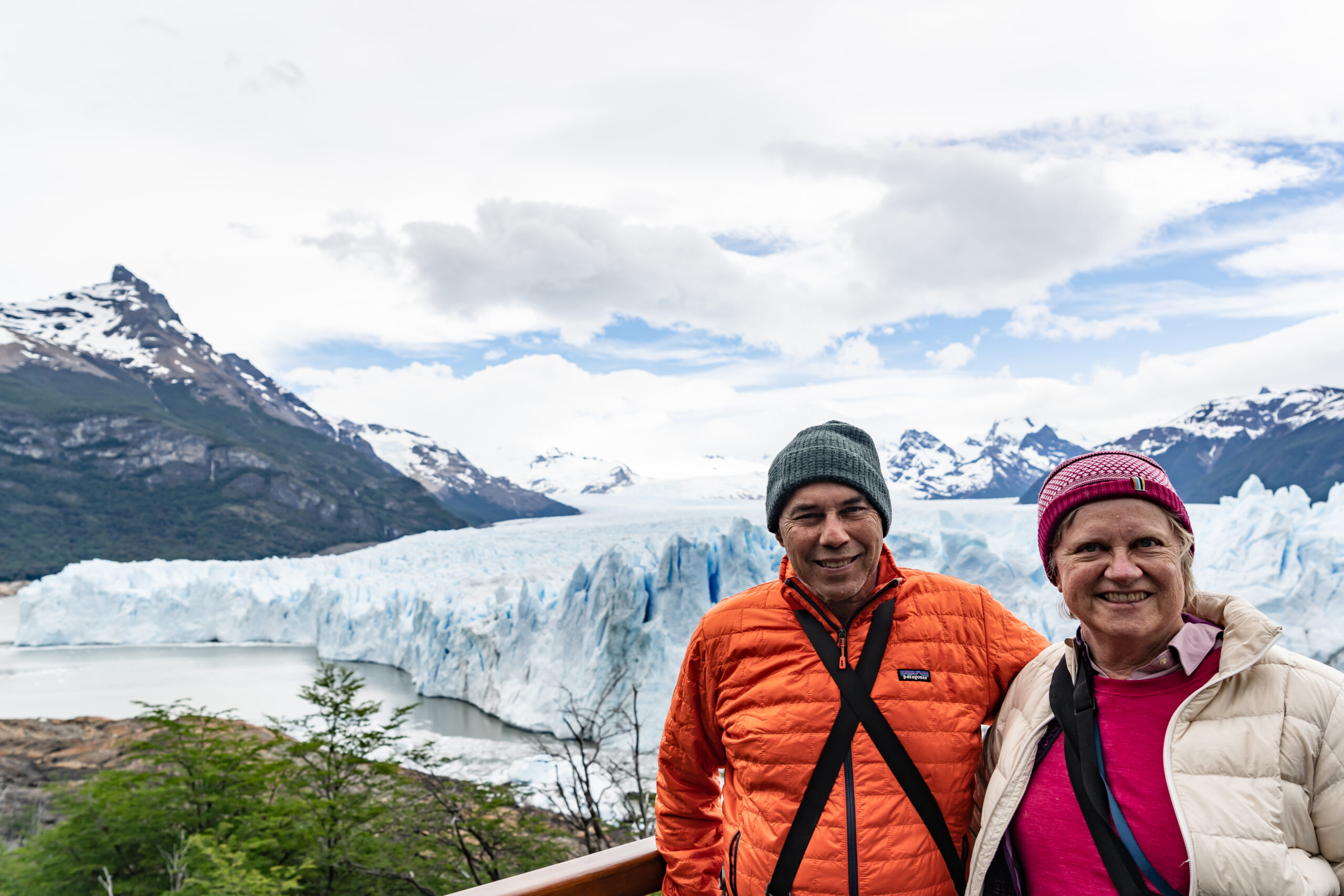Our second attempt to travel SouthEast to El Calafate got off to a bad start as a 5AM pick-up turned into a 45 minute wait on the bus as several passengers were awakened to a much earlier departure than contemplated. Luckily we arrived at a less crowded airport and made our flight.
The three hour flight was uneventful and after a quick stop at the hotel, we were off to the graces. We were accompanied by our other traveler, Ellen and our guide, Soleil, who we would learn was a great birder and botanist.
The Moreno Glacier was 60 miles away, and as we drove, we could see a flock of Chilean Flamingoes, many upland Geese and lots of shorebirds, which were too far away to identify. A little later, Soleil pointed to black specs in the sky. We pulled off to the side of the road and photographed four Andean Condors!bThese birds are the heaviest flight birds in the world (33 pounds) and have the longest wingspan of any land bird (10ft)(Magellanic Albatrosses edge out these condors in wingspan).
After gazing at these magnificent birds, we spotted a commotion down the road as several large birds were fighting over a dead hare. As we got closer, we identified a pair of Crested Caracaras and a pair of Chimango Caracaras and an even larger bird that turned out to be an immature (but still very large( Black-chested Buzzard Eagle; what luck!
A half hour later we entered the Parque Nacional Los Glaciares. here, we would see the most accessible of dozens of glaciers, situated just a few hundred feet above sea level.
After a satisfying lunch of pumpkin soup and chicken stew, we were off on well built aluminum steps and paths to the many viewpoints of the glacier. Along the way, I just missed photographing a Magellenic Woodpecker but did photograph a hard to get duck, the Spectacled Duck.
It was a beautiful afternoon, with sun streaming through the cloud cover, making for ideal photos of this wondrous spot. And just to top it off, two more of those glorious Condors came soaring over the glacier!





